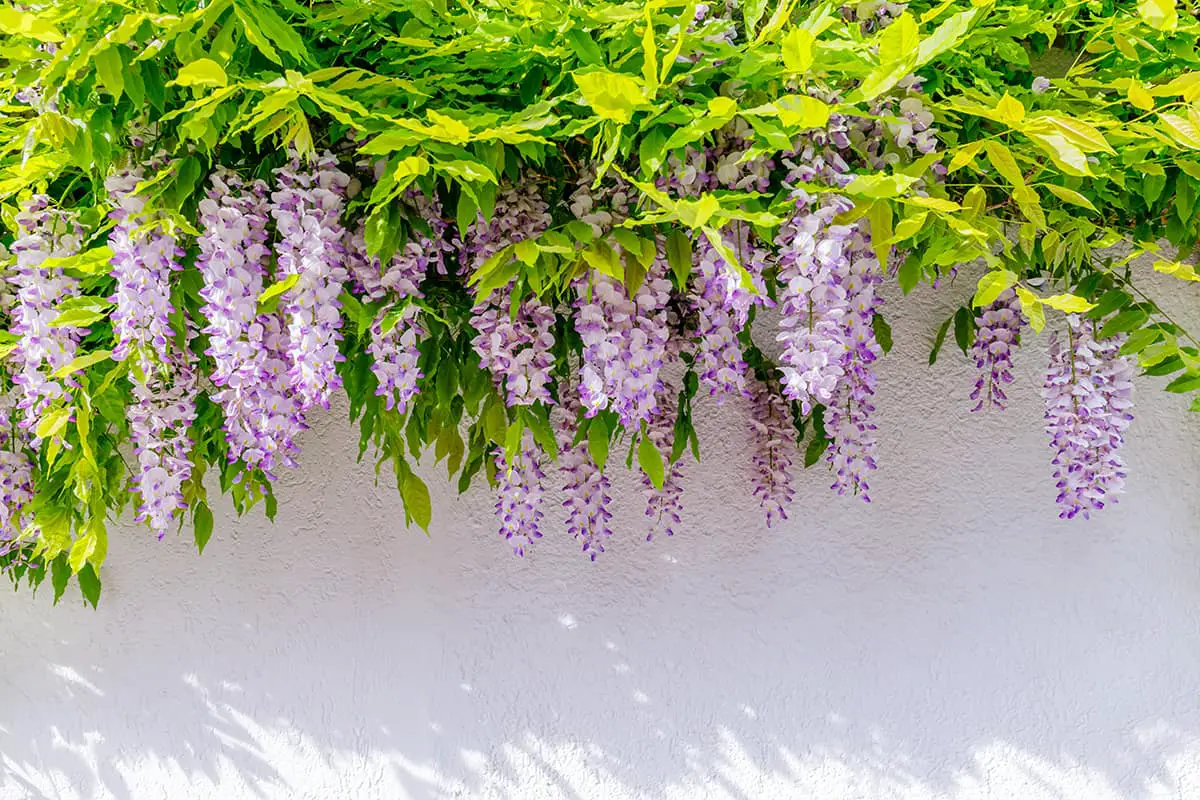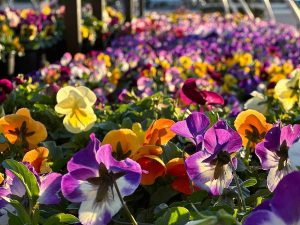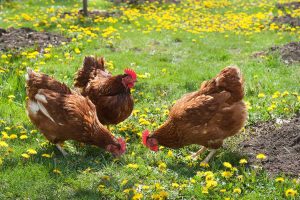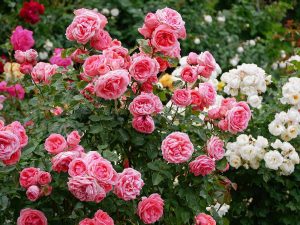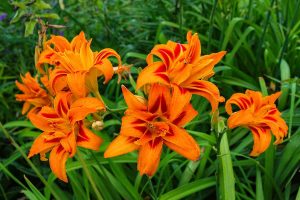Ever stood beneath a cascading canopy of wisteria blooms, lost in its beauty? I certainly have. But my journey with wisteria wasn’t always so enchanting. Like many, I grappled with its unruly growth and elusive blooms. It took trial and error, but eventually, I uncovered the secrets to successful wisteria care.
Whether you dream of a picturesque pergola or a vibrant garden wall, wisteria holds endless allure. Let’s unravel the mystique surrounding this beloved vine and cultivate a flourishing haven together.
| Common Name | Wisteria |
| Botanical Name | Wisteria spp. |
| Family | Fabaceae |
| History & Origin | Native to Asia |
| Plant Type | Vine |
| Mature Size | Varies (can be large) |
| Sun Exposure | Full sun to partial shade |
| Soil Type | Well-draining |
| Soil pH | Slightly acidic to neutral |
| Temperature | Thrives in mild to warm climates |
| Watering | Regular, deep watering |
| Fertilizing | Moderate, phosphorus-rich |
| Bloom Time | Spring to early summer |
| Flower Color | Lavender, blue, white |
| Hardiness Zone | 4-9 |
| Toxicity | Toxic if ingested |
| Common Problems | Overgrowth, lack of flowering |
Table of Contents
Light
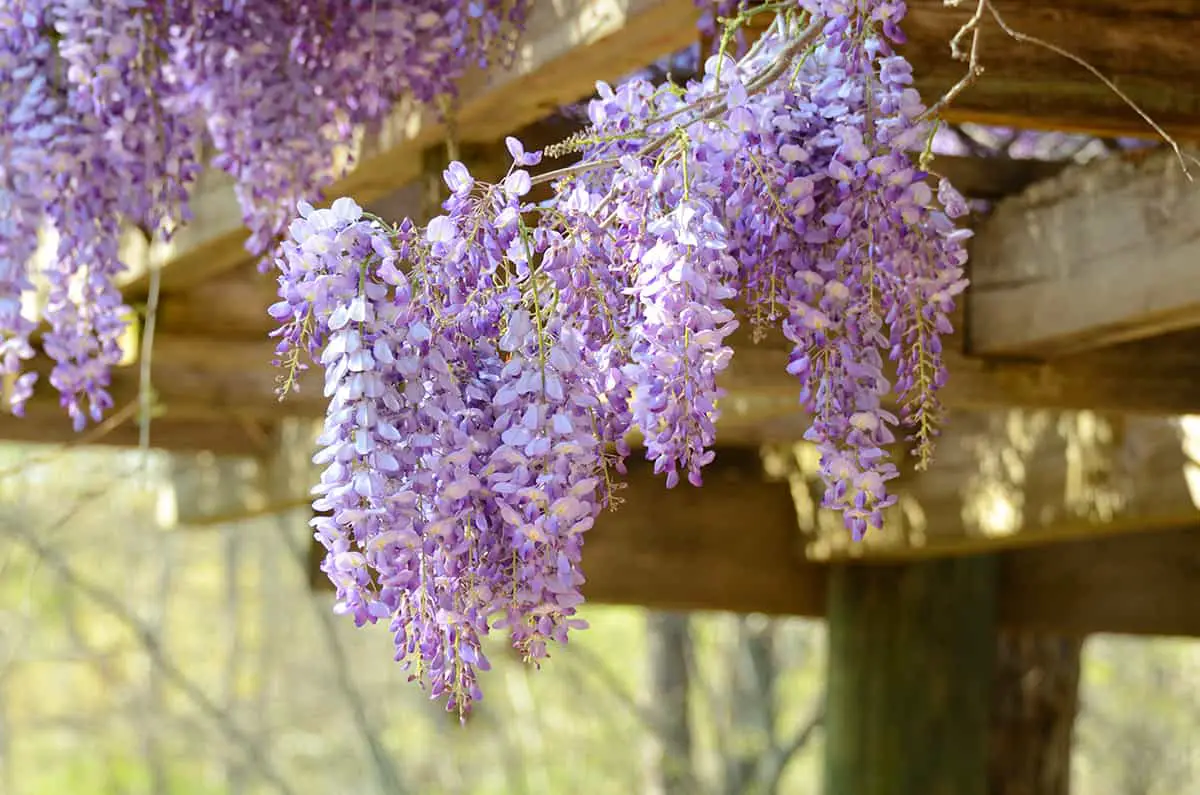
You need to plant your wisteria where it can receive full sun for the best growth and flowering. Full sun means at least six hours of direct sunlight each day.
Inadequate light can lead to poor blooming. While wisteria can survive in partial shade, the number of flower clusters may reduce significantly. You want your plant to soak in the sunlight to encourage maximum flowering.
Ensure that the chosen spot is not overshadowed by trees or buildings. A location with clear access to the sky will allow your wisteria to capture the necessary light. This vine also does well with morning light, which is less intense than the midday sun.
A bright and sun-drenched site will support the vigorous growth of your wisteria. The light fuels the plant’s ability to produce energy for lush foliage and stunning blooms. Remember, more sunlight means more flowers, so choose your site with this in mind.
Soil
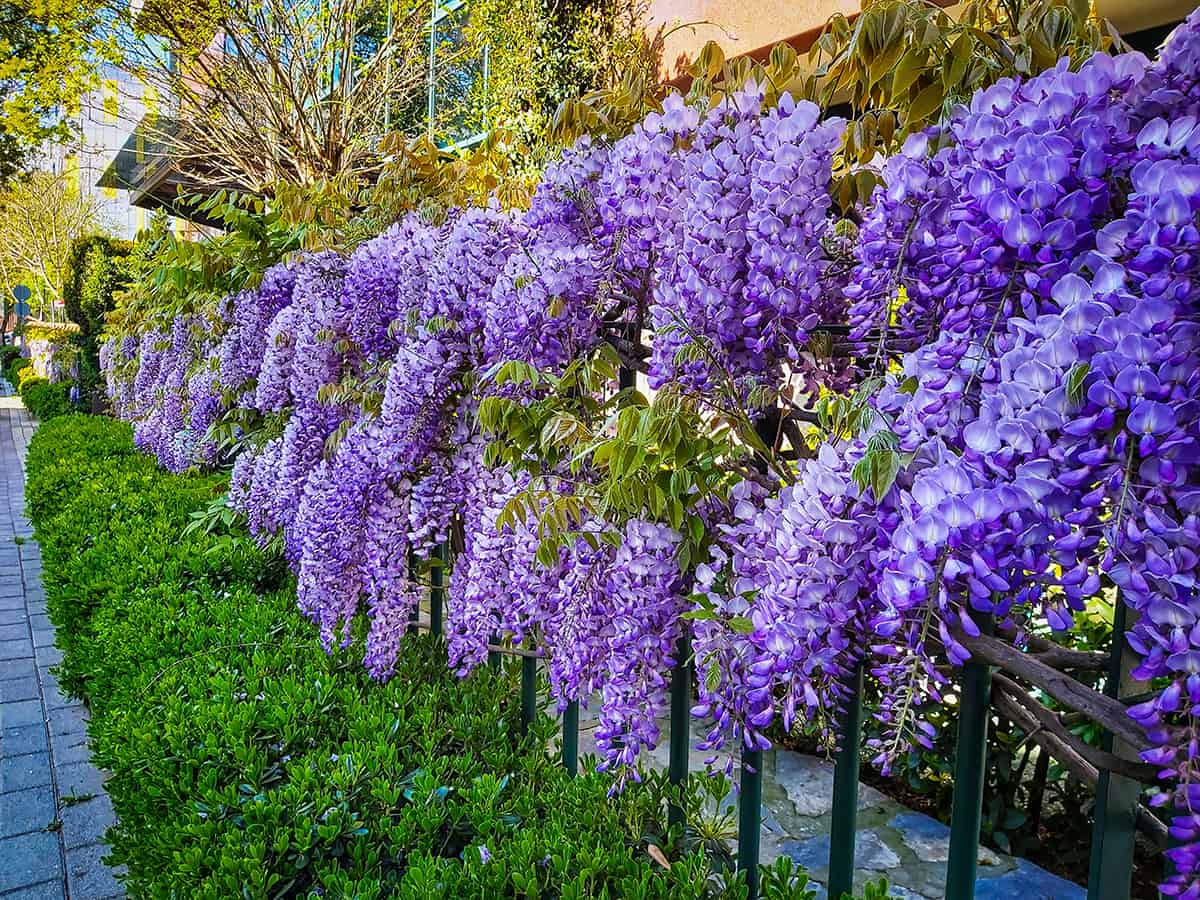
Wisteria plants thrive in a soil that ensures good drainage. Your garden’s soil should also be fertile to promote healthy growth. It’s important to prepare the soil before you plant your wisteria.
Start by testing the soil’s pH. Wisteria prefers a slightly acidic to neutral pH, ranging from 6.0 to 7.0. If necessary, adjust the pH using soil amendments. Well-drained soil is critical to prevent waterlogging, which can lead to root rot.
In terms of soil composition, wisteria is adaptable. It can grow in loamy, sandy, or even clay-rich soils. Adding organic matter like compost can improve soil fertility and structure.
To ensure your wisteria has the best chance to flourish, plant it in an area where the soil meets these conditions.
Water
Wisteria requires consistent watering, especially during the plant’s first season. Aim to keep the soil moist but not soggy, as this ensures proper establishment. Water your wisteria deeply once a week or more often during dry spells. It’s vital to adjust your watering based on rainfall and soil type.
In well-drained soil, wisteria thrives without becoming waterlogged. If you’re uncertain about moisture levels, you can check the soil with your finger. The top inch should be dry before you water again. This simple test prevents overwatering, which can be as harmful as under-watering.
Reduce watering in the winter when the wisteria is dormant. The plant needs less moisture during this time as growth slows down. Ensure adequate drainage to prevent root rot, a common issue for overwatered wisteria.
Temperature and Humidity
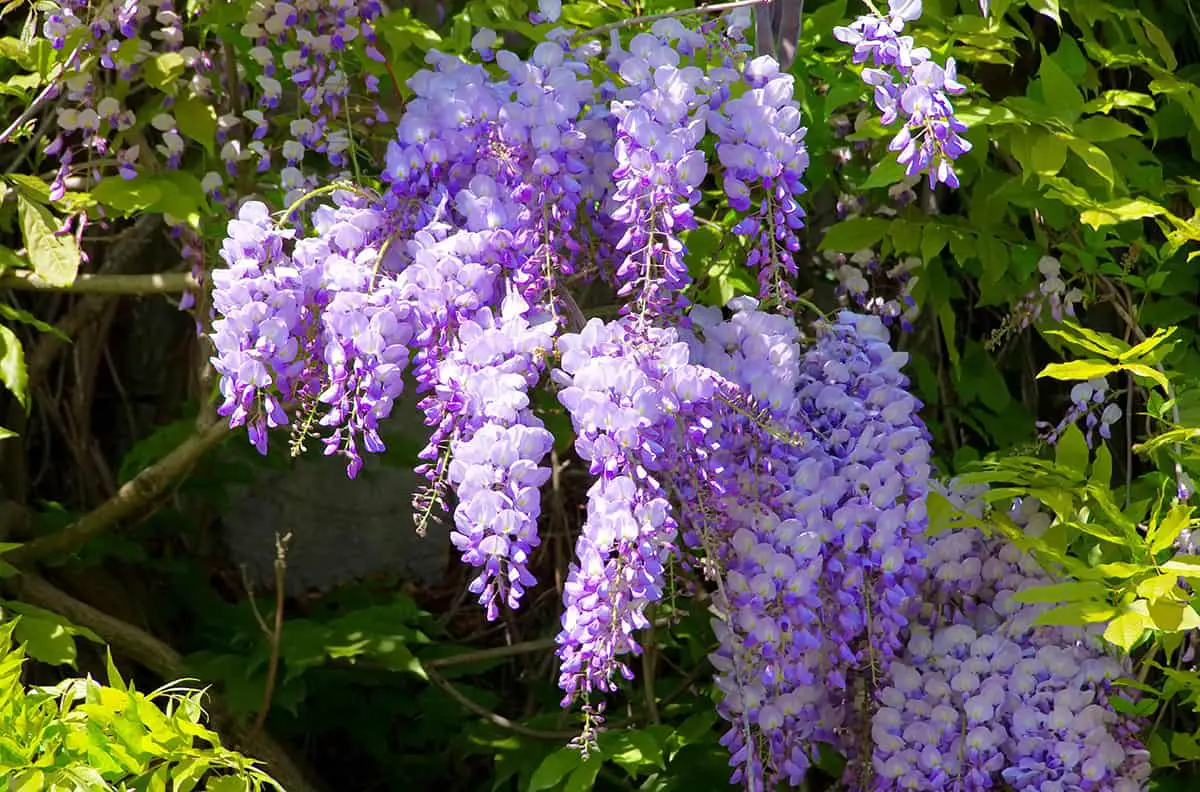
Wisteria requires specific temperature and humidity levels to thrive. You’ll find they grow best in temperate climates. Your wisteria thrives in USDA plant hardiness zones 8 through 10. These zones indicate regions with mild winters, avoiding extreme cold that can damage the plant.
In terms of temperature, ensure your wisteria experiences warmth during its active growing period. They enjoy full sun, but can tolerate slight partial shade. High humidity can lead to fungal diseases in wisteria. You must provide well-drained soil to mitigate this risk. Proper air circulation is equally important to reduce moisture levels around the plant.
When planting, you should wait until after the last frost in spring. Fall is also suitable for planting wisteria seeds. Your planting site must get at least 6 to 8 hours of sunlight daily. Avoid excessively cold drafts and winds, as well as frost pockets, to protect wisteria’s delicate buds and flowers.
Remember, too, that while wisteria can adapt to a range of soil pH levels and types, consistent soil moisture is essential. Waterlogged or overly dry soils are harmful.
Fertilizer
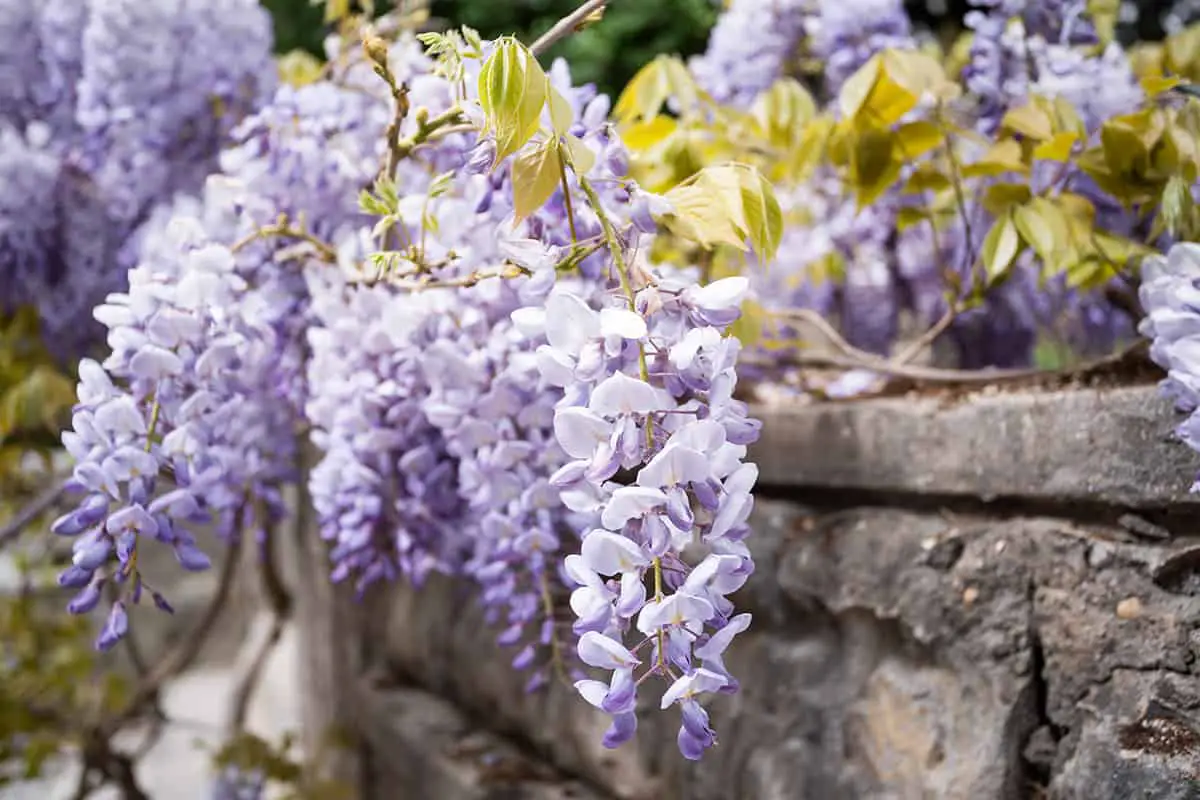
Wisteria generally requires minimal fertilizer. Excessive feeding can lead to leafy growth at the expense of flowers.
Apply a low-nitrogen fertilizer in early spring to support healthy growth without discouraging blooms.
Soil health affects wisteria’s need for fertilizer. If your soil is rich and fertile, you might not need to fertilize your wisteria at all. In less nutrient-dense soils, a balanced fertilizer helps the vine grow. It’s vital to conduct a soil test to assess nutrient levels.
Fertilizing wisteria should be conservative. Once a year, typically in spring, is enough. Find a fertilizer formulated for flowering plants. Look for a low-nitrogen formulation, such as a 5-10-10 or 5-10-5 NPK ratio. Overfertilizing encourages foliage growth, not the desired blooms.
Remember, the amount you use matters. Follow the instructions on the product label and avoid over-application. This protects the plant from potential fertilizer burn and environmental harm.
Propagation
To grow wisteria from seed, start by obtaining viable seeds. This method may take longer for flowering, compared to other propagation methods. You plant the seeds in well-drained soil after the last frost has passed.
Another common way to propagate wisteria involves taking cuttings from an established plant. Cut a stem segment from new growth and plant it in a rooting medium. You start these cuttings in late spring to early summer.
Layering is also an option. Curve a low-hanging, flexible stem to the ground. Nick the stem and cover part of it with soil. This convinces the stem to produce roots. It can remain attached to the parent plant until it establishes a strong root system.
Each method benefits from well-drained soil and a sunny location to facilitate growth. Regular watering helps, but avoid overwatering.
Pruning
By pruning, you encourage the development of short spurs that will carry the next season’s blooms.
To prune, start by identifying the base of last year’s growth. These stems will be lighter in color and more pliable. Trim back to this point, careful to preserve this flowering wood, as highlighted by Utah State University Extension.
Prune twice a year for best results. In late winter, control the overall size and remove unwanted growth. This may stimulate flower bud production. After the spring bloom, a second pruning helps manage shape and encourages more flowers. Don’t be afraid to cut back hard if necessary, especially since wisteria can become overgrown, as the University of Arkansas System Division of Agriculture points out.
The timing of your pruning affects wisteria’s ability to flower. Avoid cutting back in early spring, as this can remove the set flower buds. Instead, prune after the leaves fall in autumn and just after the spring flowering to ensure blooms for the following year.
Potting and Repotting

When you grow wisteria in a pot, proper potting and repotting are crucial.
Choose a large container with adequate drainage to start. Your wisteria’s roots need room to expand and thrive. Look for a pot that is several inches wider than the plant’s root ball.
In spring, repot your wisteria if it has outgrown its current pot. You’ll need fresh potting mix rich in organic matter. Gently remove the plant from its old container. Trim any dead or excessively long roots before repotting. Place a layer of potting soil in the new container. Then, set the wisteria in and fill around it with more soil. Keep the soil level an inch below the rim to allow space for watering.
Water your newly potted wisteria thoroughly. Ensure the soil is moist but not waterlogged. Repotting stimulates growth, so monitor your wisteria closely. Support its rapid growth with regular feeding and pruning as required.
Common Problems & Troubleshooting
Wisteria often presents with issues such as failing to bloom or dealing with pests.
If your wisteria does not bloom, ensure it’s not over-fertilized with nitrogen. Too much nitrogen encourages leaf growth over flower development. Instead, try using a phosphate-rich fertilizer.
Pest infestations can include aphids, leaf miners, or scale insects. You can usually handle aphids by spraying a strong jet of water to remove them from leaves. For leaf miners and scale, consider horticultural oil or insecticidal soap. Always follow the product’s application instructions.
Pruning is essential for wisteria care but can cause confusion. Incorrect pruning may lead to a lack of flowers. Prune in late winter to shape the vine and again in mid-summer to remove excess growth. This encourages the formation of flowers the following season.
Disease can strike wisteria, with common problems being root rot and powdery mildew.
Poor drainage causes root rot. Ensure your wisteria has well-draining soil to prevent this issue. For powdery mildew, increase air circulation around the plant and apply fungicides if necessary.
If your wisteria’s leaves turn yellow, the plant may have a nutrient deficiency. It could also indicate too much water. Adjust your watering schedule and consider soil testing to determine if you need to add specific nutrients.
For best care, give your wisteria support to climb, like an arbor or trellis. This will display the hanging blooms to their best advantage and help prevent structural problems.
Wisteria Varieties to Grow
Wisteria is a versatile vine with several species suited for your garden, each with distinctive growth patterns and floral characteristics. Find the right wisteria variety to create a stunning display of cascading flowers in your outdoor space.
Wisteria Sinensis (Chinese Wisteria)
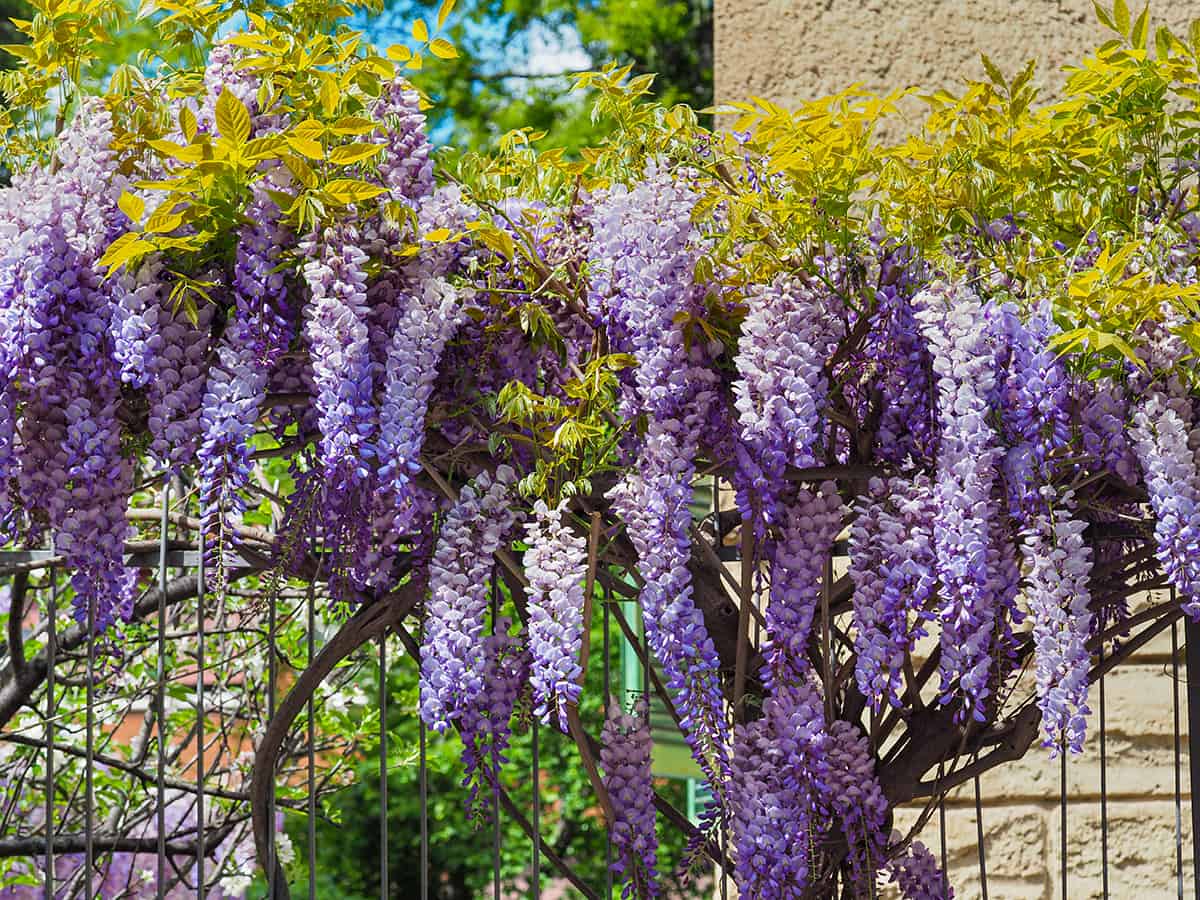
Bloom Time: Mid-spring, before the foliage appears
Features: The Chinese wisteria offers abundant, fragrant flowers that form in grape-like clusters. This vigorous climber twines counter-clockwise and can reach up to 25 feet with the proper support. You might choose this variety for its early blossoms and rapid growth.
Wisteria Floribunda (Japanese Wisteria)
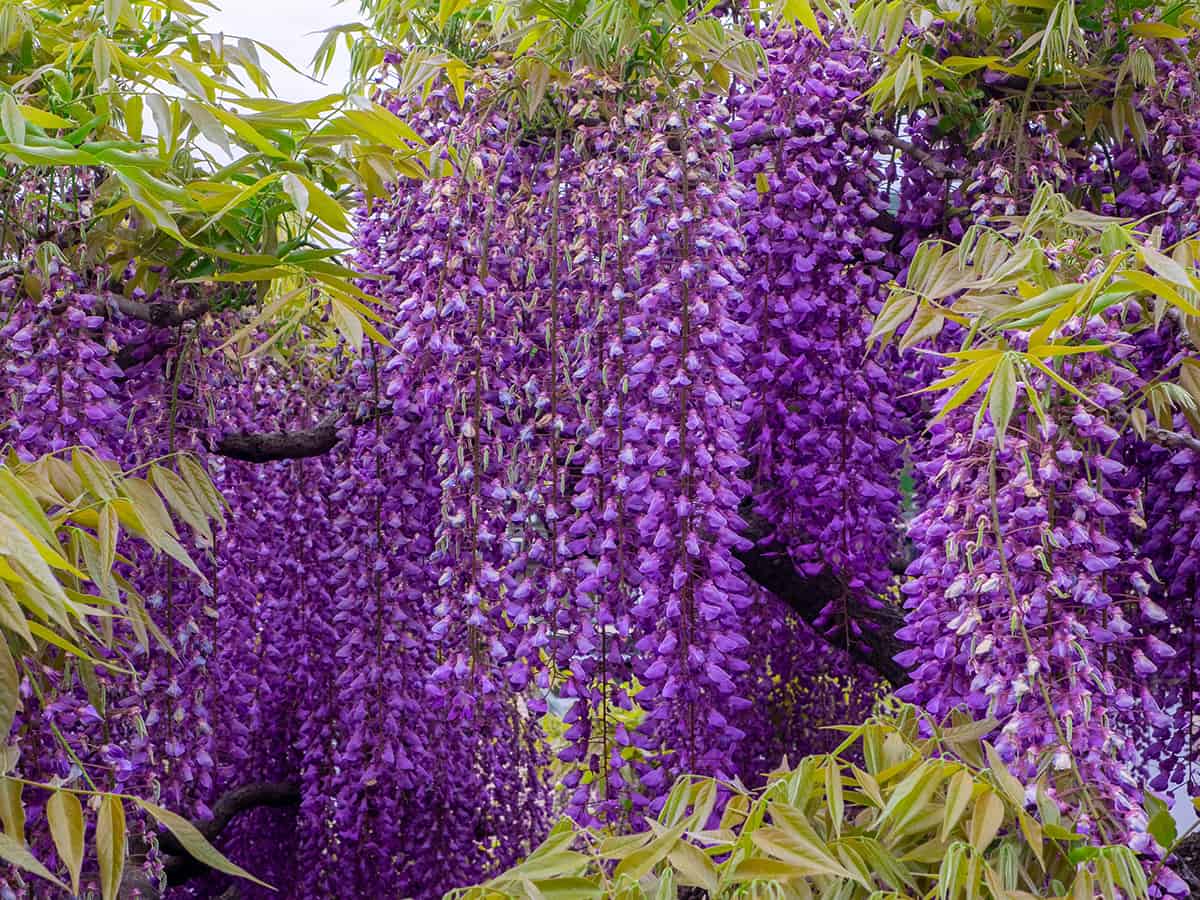
Bloom Time: Late spring, as the leaves develop
Features: This variety, known as the Japanese wisteria, is prized for its long, fragrant flower clusters that can grow up to 20 inches in length. It twines clockwise, and its foliage becomes a beautiful golden hue in fall. Your garden’s vertical structures can be ideal supports for this wisteria’s graceful growth.
Wisteria Frutescens (American Wisteria)
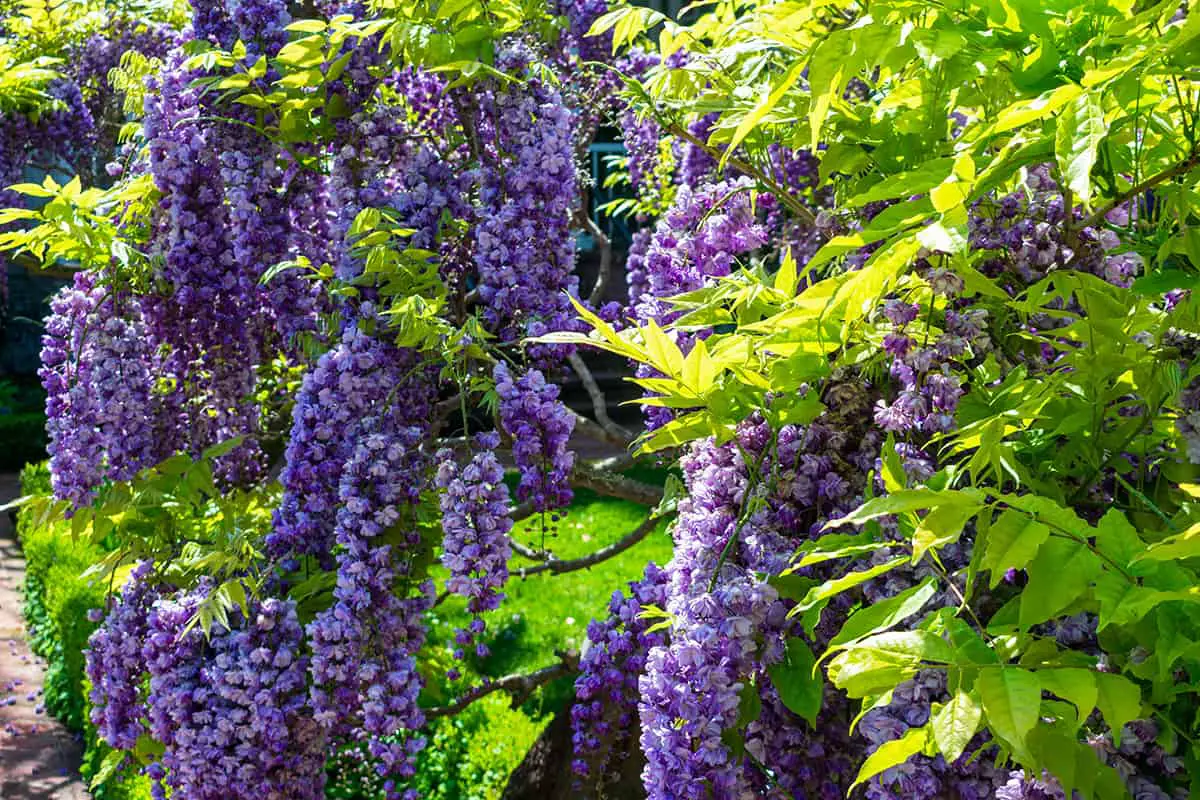
Bloom Time: Late spring to early summer
Features: American wisteria is less aggressive than its Asian counterparts, making it a more manageable option for your trellis or arbor. Its compact, purple-blue flowers are lightly scented. This native variety is an excellent choice for gardeners who want a less invasive option.
Wisteria Macrostachya (Kentucky Wisteria)
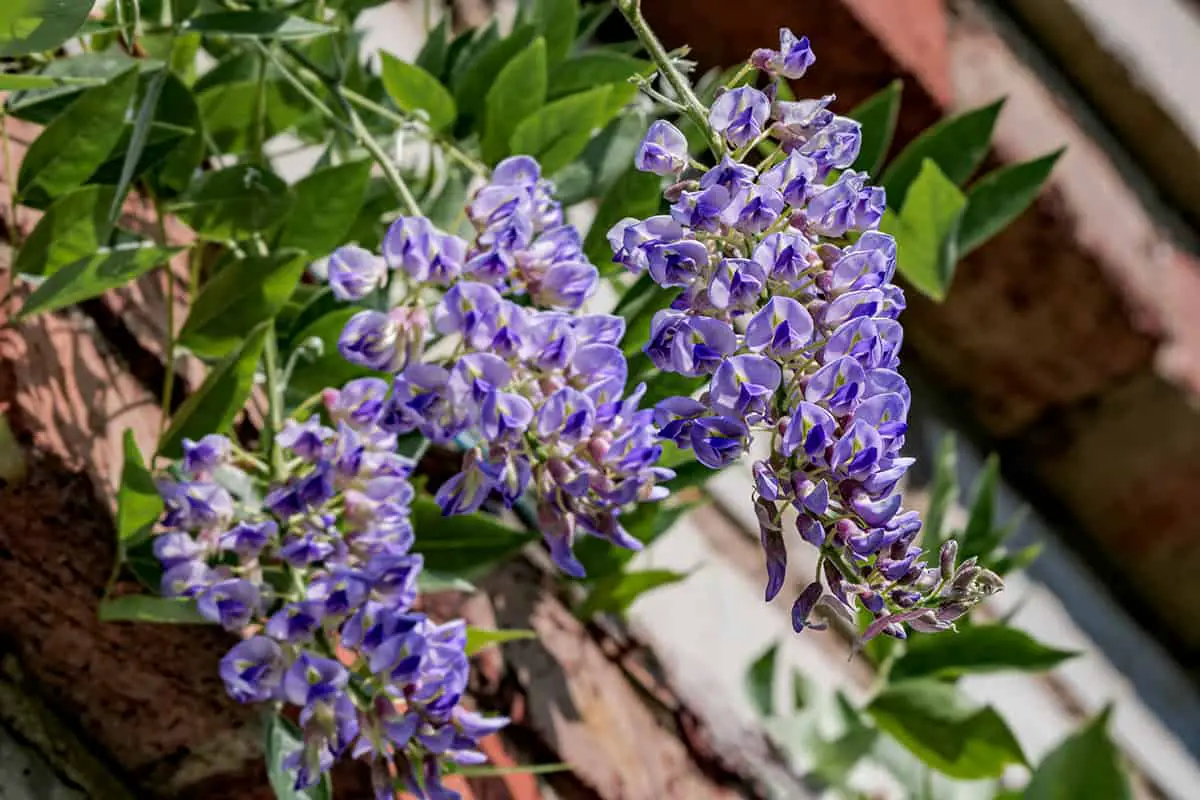
Bloom Time: Summer
Features: Kentucky wisteria, another native species, is known for its hardiness and adorns your garden with dense clusters of blue-purple blooms. It grows in a twining habit just like others and can withstand colder climates better than exotic species, assuring successful growth in your yard even in regions with harsher winters.
How to Control Wisteria Growth
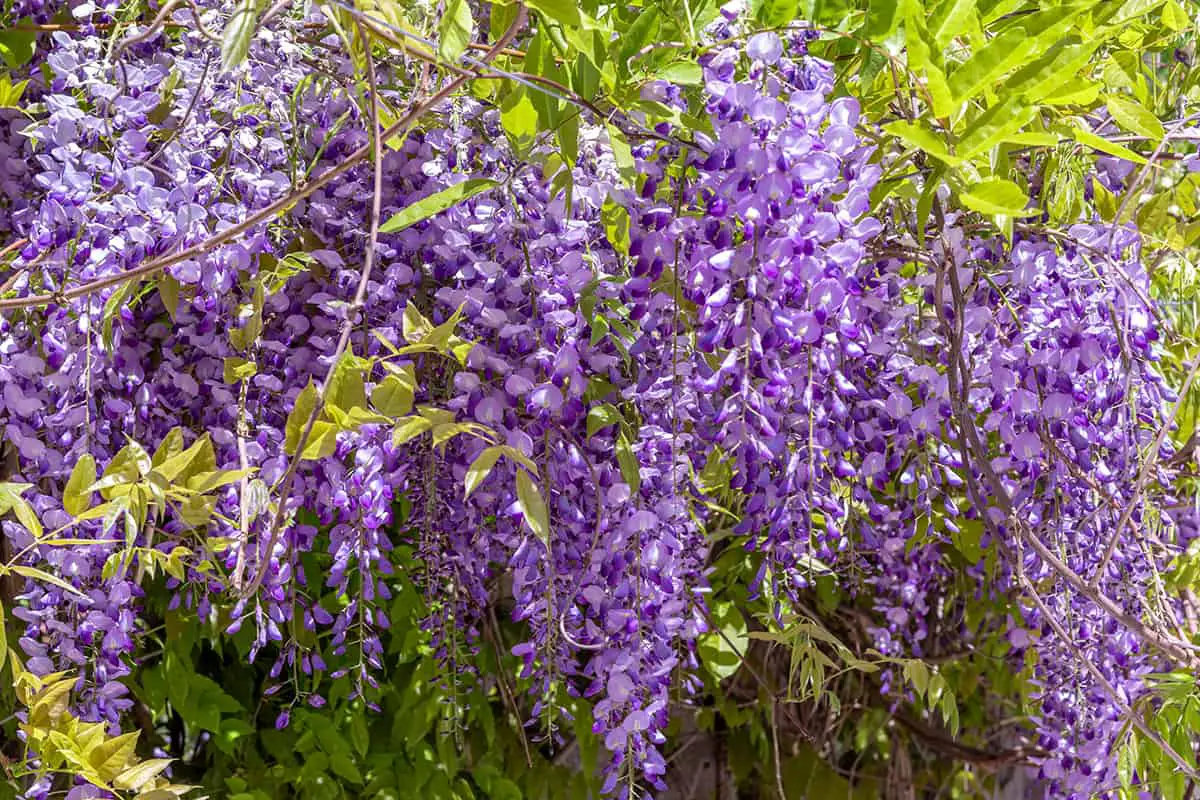
To manage wisteria growth, timely pruning is key. Prune twice a year, cutting back new growth to a few buds in late winter. In summer, remove excess shoots to maintain the structure. This ensures your wisteria doesn’t become unruly and stimulates the development of flower buds for the next season.
Ensure support structures are strong. Wisteria can be heavy, so arbors or trellises must withstand the weight. Set these up when planting to avoid disturbance later.
Root pruning, a less common method, helps control rapid growth. By severing some roots, you signal the plant to focus on flower production rather than just spreading. You should do this carefully in late fall, cutting a few feet from the main trunk to avoid harming the plant’s health.
For soil conditions, well-draining soil is crucial to prevent root rot. If the soil is poorly drained, improve it with organic material or consider a raised bed. Wisteria prefers a slightly acidic soil pH between 6 and 7.
To discourage unwanted spread, you must regularly monitor and remove stray shoots. This is especially important in spring and summer when the plant is most vigorous.
Lastly, if your wisteria is still too vigorous, consider applying a phosphorus-rich fertilizer. This encourages blooming over excessive vegetative growth. Apply this carefully to promote balance in your wisteria’s growth habits.
